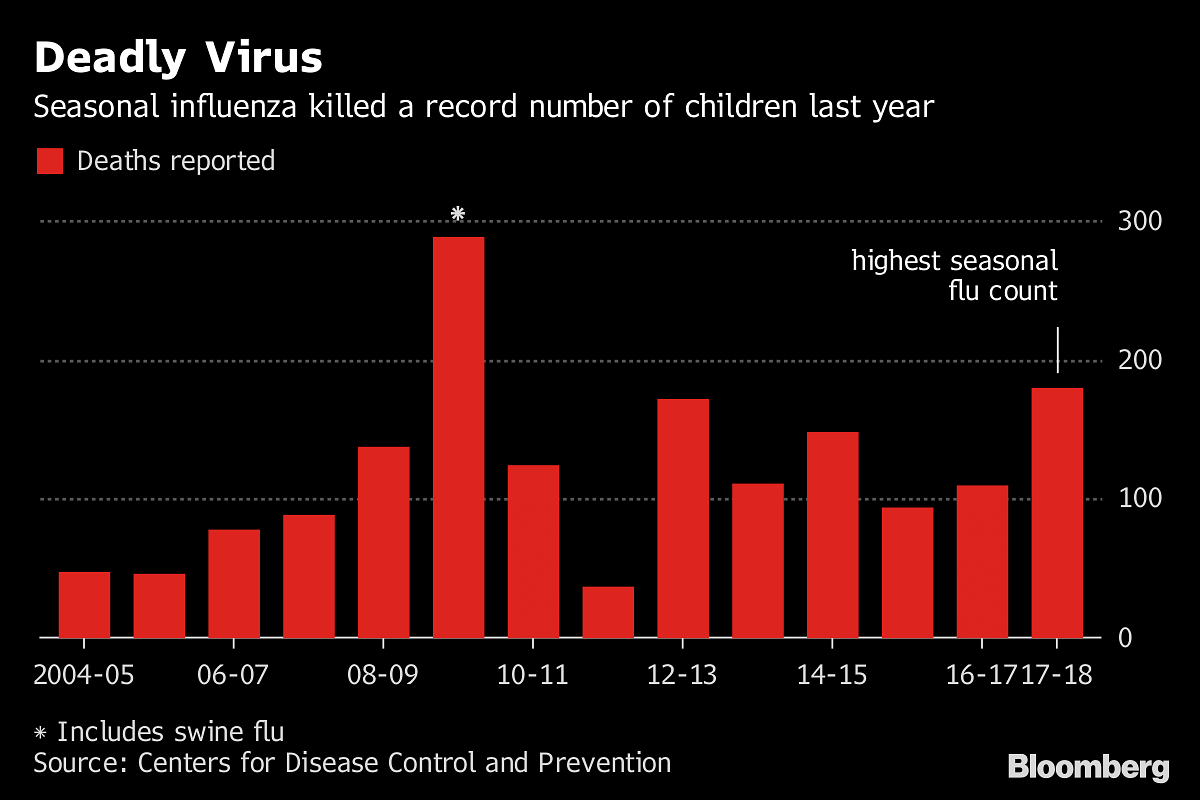Flucelvax, produced by Melbourne-based CSL’s Seqirus unit, is 36.2 % more effective than conventional shots in preventing flu-like illness that killed almost 200 American children last winter.
New York: Crafting better flu shots comes down to dispensing with 1940s technology, according to CSL Ltd., which says its new method of vaccine production may offer better protection against the virus that killed almost 200 American children last season.
Flucelvax, an immunisation produced by CSL’s Seqirus unit with cell-based technology, was 36.2 per cent more effective in preventing flu-like illness last winter than conventional shots made using chicken eggs, the Melbourne-based company said in a study released Friday.
Vaccination is recognized as the best way to protect against the respiratory disease, which kills as many as 650,000 people annually. Still, the shot’s effectiveness varies from year to year, depending on the closeness of the match between that season’s circulating viruses and the vaccine, which is usually reformulated annually. While eggs have been used to grow flu viruses to make vaccines for decades, scientists have found that once inside the egg, flu tends to undergo adaptive changes that makes it better suited to chickens, not people. Amplifying vaccine viruses in mammalian cell culture aims to avoid that problem.
“This is a real advance,” said Paul Perreault, CSL’s chief executive officer, in a telephone interview. “Cell-based technologies are showing effectiveness. It tends to give a better match and will help tremendously in the confidence for consumers to go out and get vaccinated.”
The prospect of better protection comes at a higher cost. Seqirus, which is the world’s largest cell-based influenza vaccine producer, said Flucelvax has a list price of $20.47 for a standard 0.5 ml dose — slightly more than egg-based options like Fluzone, Fluarix and FluLaval, whose prices range from $15 to $17, according to Bloomberg data. An alternative egg-free approach from Paris-based Sanofi, called Flublok, uses recombinant proteins to genetically match prevailing strains.
‘Slight Premium’
“There’s a slight premium on the cell-based, and should be if it’s more effective,” Perreault said.
Seqirus made 21 million doses using the technology during the 2017-2018 season at a plant in Holly Springs, North Carolina. A process improvement program approved recently by the Food and Drug Administration will enable it to ramp up supply and respond faster in the event of a flu pandemic or vaccine shortages.
“With egg-based vaccines, you need to order more eggs and need more chickens,” Perreault said. “But cells can be generated immediately.”
The company collected electronic medical records from 92,192 people who received a cell-based vaccine and 1,255,983 people who received an egg-based vaccine during the last influenza season between Aug. 1, 2017 and March 31, 2018. The sample population included US patients over the age of 4 who received either form of vaccine in primary care.
The last 2017-2018 Northern American flu season, in which the H3N2 strain dominated, was especially bad, leading to some 900,000 hospitalizations, including 185 pediatric deaths, in the US alone.
Last season’s shot reduced a person’s overall risk of having to seek medical care at a doctor’s office for flu-like illness by 40 per cent, the Centers for Disease Control and Prevention in Atlanta said this month. Effectiveness for the H3N2 strain was 25 per cent.
So-called egg-adapted changes to the viruses used in the vaccine might have contributed. That production method was discovered by Nobel prizewinner Frank Macfarlane Burnet in Melbourne in the 1940s and routinely used by vaccine makers since. –Bloomberg







